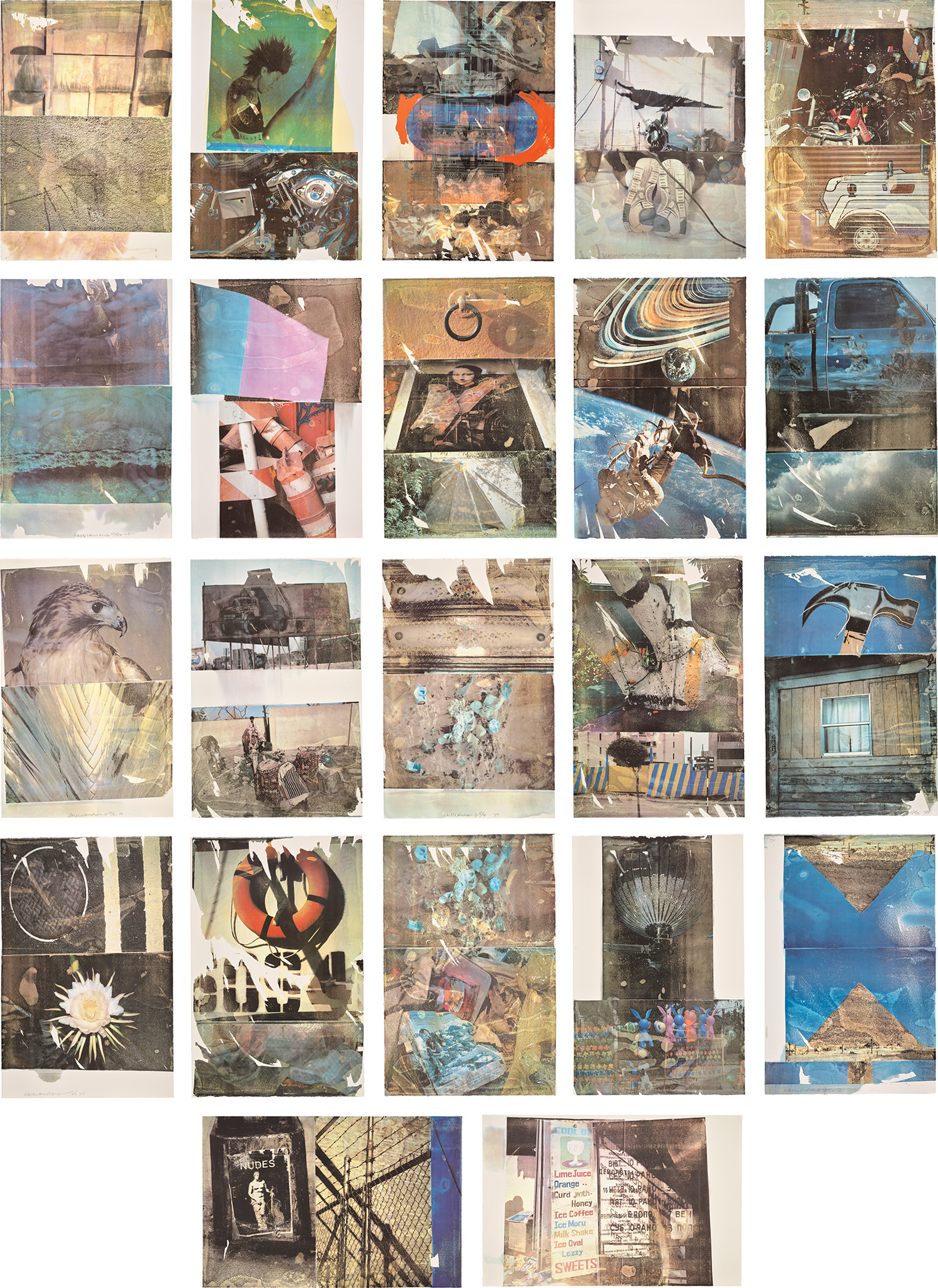

55
Robert Rauschenberg
Tribute 21
1994
The complete set of 22 lithographs in colors, on Arches Infinity paper, the full sheets, all contained in the original white cloth-covered clamshell portfolio box.
all S. 41 x 27 in. (104.1 x 68.6 cm) (two horizontal)
portfolio 43 1/8 x 28 7/8 x 1 3/4 in. (109.5 x 73.3 x 4.4 cm)
portfolio 43 1/8 x 28 7/8 x 1 3/4 in. (109.5 x 73.3 x 4.4 cm)
Incised with signature and title on a metal plaque affixed to the front of the portfolio box, all prints signed, dated and numbered 22/50 in pencil on the reverse (there were also 20 artist's proofs), published by Felissimo Corporation, Tokyo (with their blindstamp).